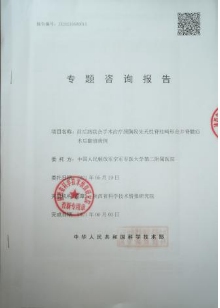
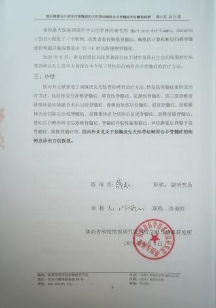
According to the description from Dr. Yan Kang: the patient is a 40-year-old male. He was diagnosed with a "congenital spinal deformity combined with spinal herniation" at another hospital based on limb numbness 15 years ago. He underwent anterior cervical surgery, and the postoperative symptoms were basically relieved. However, there was no obvious inducement for the cotton feeling on his right lower limb three months ago. After conservative treatment with drugs, the symptoms were not relieved but lead to gradual aggravation of limbs numbness and walking instability.
After many inquiries, the patient came to the orthopedic department of Tangdu Hospital for treatment. After careful physical examination, a detailed review of imaging data and general case discussion, Prof. Liao Bo diagnosed the patient as having: 1. Spinal cord herniation (Cervical 6 to thoracic 1); 2. Congenital spinal deformity of cervicothoracic segments; 3. Post-surgery of ACCF.
Considering the complexity and severity of the patient's conditions based on comprehensive evaluations, Prof. Liao Bo's team successfully implemented an "anterior and posterior scoliosis-correction of cervicothoracic spinal deformity, spinal hernia release, and dural hernia repair" in full cooperation with a multi-disciplinary team.
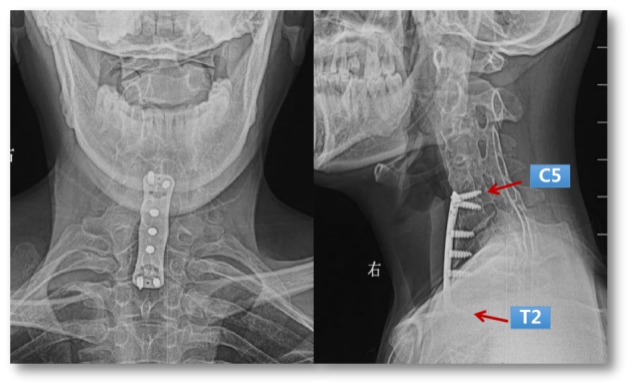
Preoperative X-ray: post-surgery ACCF, cervical multi vertebral fusion and kyphosis deformity
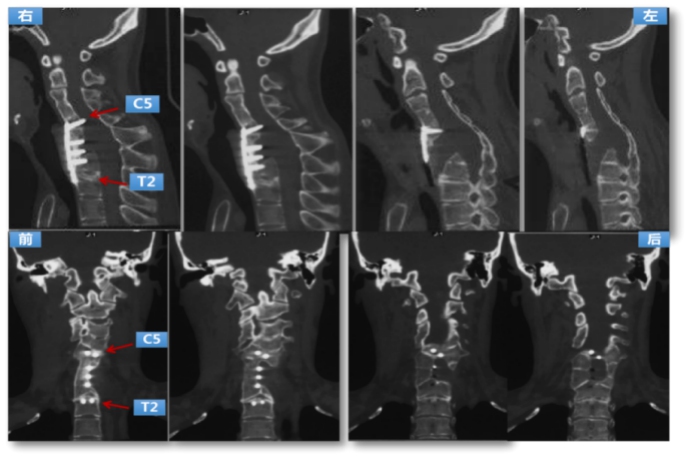
Preoperative CT: the left anterior bone defect of cervicothoracic vertebrae, partial screw’s original nail plate system was cut out before the spinal canal was entered.
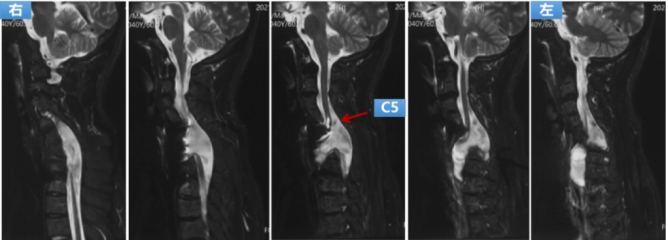
Preoperative MRI: the dura mater and spinal cord herniated from the defected bone to the front of the vertebral body to the left, which shows spinal cord compression and ischemic degeneration.
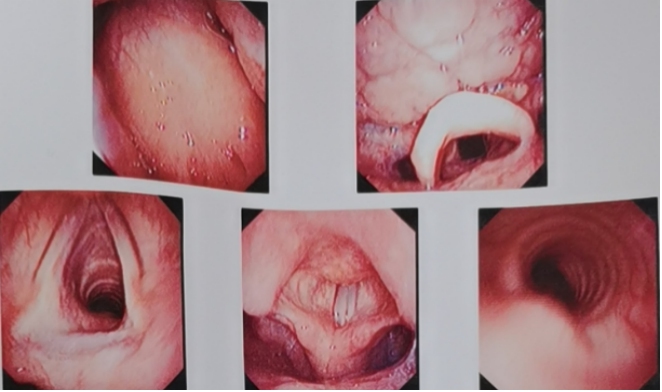
To evaluate the function of recurrent laryngeal nerve and vocal cord on the original side and determine the surgical approach.
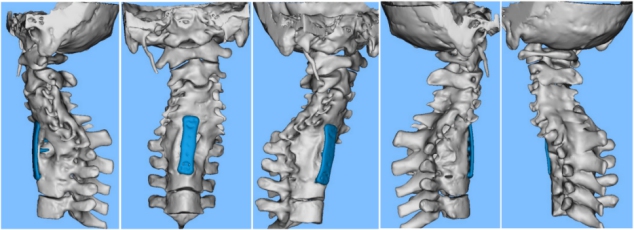

Using digital medical technology plans to simulate the surgery

Prof. Liao Bo’s team conducted preoperative ward rounds and surgical discussions to evaluate the details such as the operation plan and risk control methods.
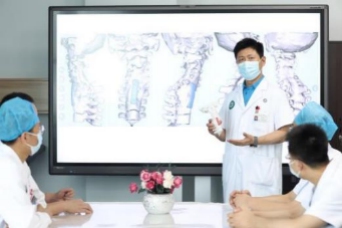
Prof. Liao Bo’s team conducted preoperative ward rounds and surgical discussions to evaluate the details such as the operation plan and risk control methods.
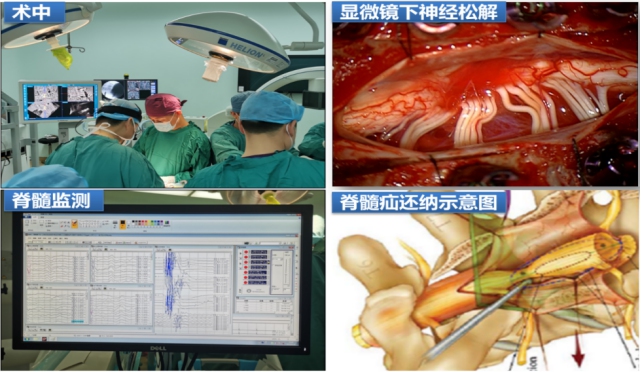
Intraoperative scene
Pro. Liao Bo introduced that the revision operation is much more difficult because of the patient's serious condition and previous anterior cervical surgery, which could lead to patient dysfunction, paralysis and may even be life-threatening. The operation could not succeed without the cooperation from thoracic surgery, otolaryngology department, anesthesia team, nursing and surgical teams. In order to ensure the accuracy and safety of the operation, advanced technologies, such as microscope assistance, spinal cord monitoring, ultrasonic osteotome and digital navigation, were used in the whole process of nerve decompression and osteotomy. As a result, the operation was successful and the patient recovered well.
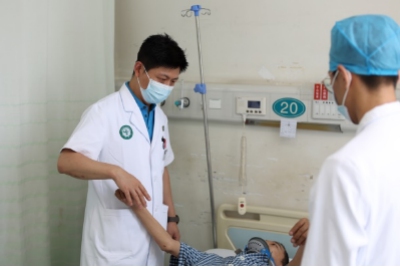
Postoperative interview
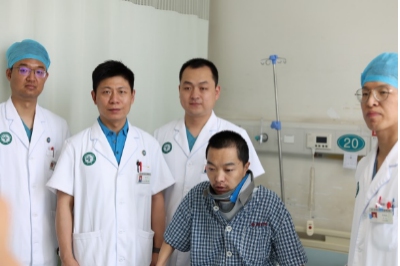
Postoperative interview
"Spinal herniation", "cervicothoracic spinal deformity" and "spinal deformity revision" are complicated and challenging that would bring great risks to patients. The patient's condition is more special because all the risks mentioned previously existed at the same time. Therefore, it required the surgical team to have firm confidence in professional technology and a high sense of responsibility for the patient, which is inseparable from multidisciplinary cooperation and the hardware support of the hospital platform.
The success of the surgery indicates that the hospital has made a phased breakthrough in dealing with complicated spinal surgical diseases. In the future, the orthopedic surgery team of Tangdu Hospital will constantly explore and improve the surgical technology and benefit more patients.
